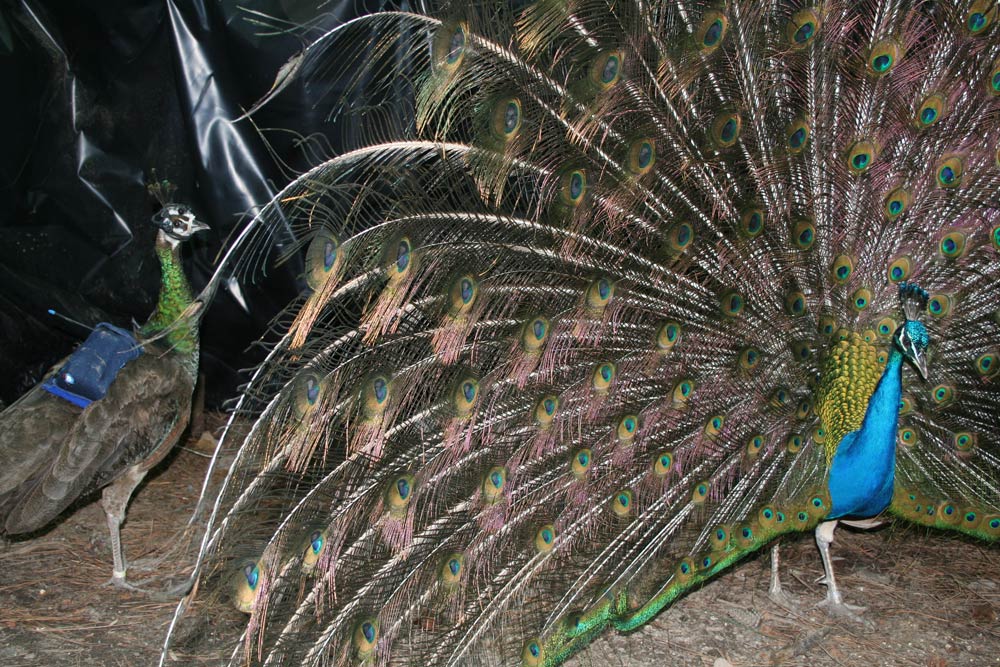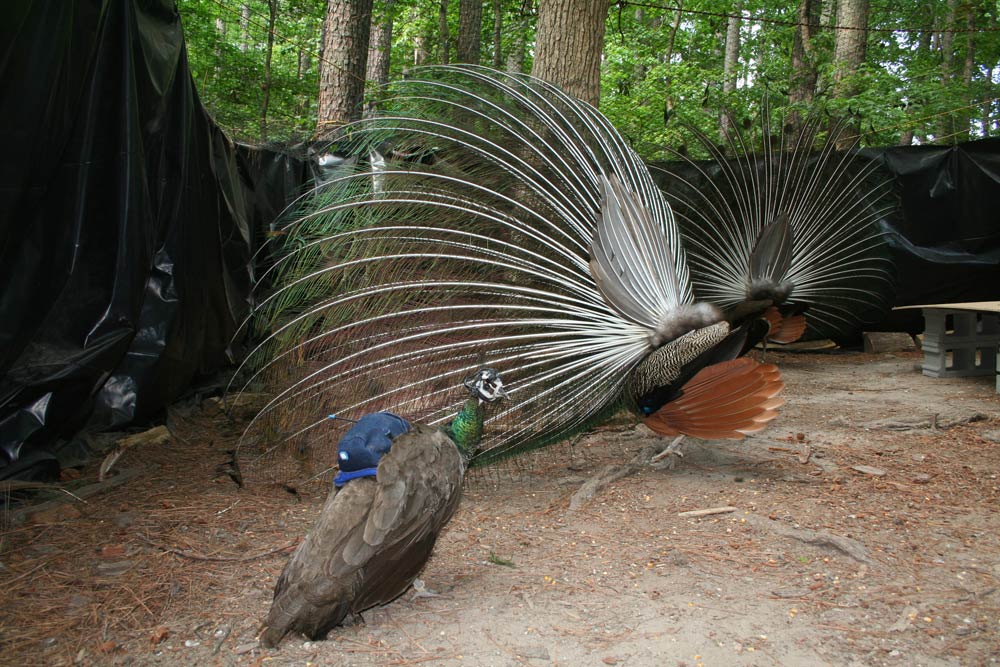Not Impressed: Peahens Ignore Most of Peacocks' Flashy Displays

A male hoping to attract a female's attention typically needs something to help him stand out from the crowd, and the inhabitants of the animal kingdom are no exception, with peacocks representing particularly showy lovers.
However, in a new study, researchers found that even though peacocks put on some of the most striking and theatrical courtship displays, peahens almost always gazed at the lower part of the peacock's train of feathers, particularly below the neck.
"The females were primarily looking at the lower portion of the males' display," said study author Jessica Yorzinski, an evolutionary biologist at Purdue University in Lafayette, Ind. "They rarely looked at his head, or anything above it. The males put on this huge display, and females seem to look at only a small portion of it." [Magical Mating: Top 10 Swingers of the Animal Kingdom]
Yorzinski conducted the research as a doctoral candidate at the University of California, Davis and Duke University.
Previously, scientists suggested the colors of the feathers, or the length of a male's train, influenced a female's mating decisions. Others thought peahens were likely drawn to the distinctive eyespots on a peacock's display of feathers.
"Recently, it was shown that there's a threshold for the eyespots — below a certain number, females won't look at certain males," Yorzinski told LiveScience. "There have also been experiments that showed that when some eyespots were cut off, females had changing preferences for males."
Backpack-toting peahens
Get the world’s most fascinating discoveries delivered straight to your inbox.
Yorzinski designed an experiment to measure where the peahens look when males put on a display. To do so, she used cameras and eye-tracking equipment: One camera filmed the view from the perspective of the peahen, and another camera tracked the movement of the peahen's pupils. Yorzinski combined the data and used the movement of the bird's pupils to determine where the peahen was looking.
For the experiment to work, Yorzinski gradually trained captive peahens to wear tiny backpacks holding the equipment, and a helmet with two cameras attached.
"I had my doubts along the way," she said. "It took a couple of months to get the females very comfortable with wearing the equipment. I kept gradually adding weight to the backpack until it approached the actual weight of the eye-tracker."
To test the accuracy of the eye-tracking technology, Yorzinski threw food into the enclosure to monitor the peahens' gaze. Yorzinski also observed the peahens' pupils when a predator was introduced into their environment — in this case, how the birds' eyes followed a taxidermic raccoon as it rolled past the enclosure on a skateboard.
Peahen gaze
Yorzinski is unsure why peahens focus primarily on the lower part of a peacock's train. She suggests the peacock's upper train may help females spot males across long distances, since in India, where peacocks are typically found, thick vegetation could obscure everything except the top part of the males' display of feathers.
"It's possible that when they're far away, females use the upper train to find the males, and then as they get closer, they start directing their eyes to the lower part of the train," Yorzinski said.
She also noticed that females seem to look back and forth across the lower part of the train, which could indicate that they are assessing its width, she added.
"The width of the male's train could reveal some information about his age, since a young male won't have as big a train as a more mature one," Yorzinski explained. "A symmetrical train could also give indications about a male's quality, such as his immune function, or some other aspects of him that may be indicators to females that he might provide healthy offspring."
Yorzinski intends to follow up this study by manipulating some of the male peacock's traits, and observing how they impact peahens' mating decisions. She is also using the same eye-tracking technology on males to see how they check out the competition and evaluate other peacocks' courting displays.
The detailed findings of the new study were published online today (July 24) in the Journal of Experimental Biology.
Follow Denise Chow on Twitter @denisechow. Follow LiveScience @livescience, Facebook & Google+. Original article on LiveScience.com.

Denise Chow was the assistant managing editor at Live Science before moving to NBC News as a science reporter, where she focuses on general science and climate change. Before joining the Live Science team in 2013, she spent two years as a staff writer for Space.com, writing about rocket launches and covering NASA's final three space shuttle missions. A Canadian transplant, Denise has a bachelor's degree from the University of Toronto, and a master's degree in journalism from New York University.



